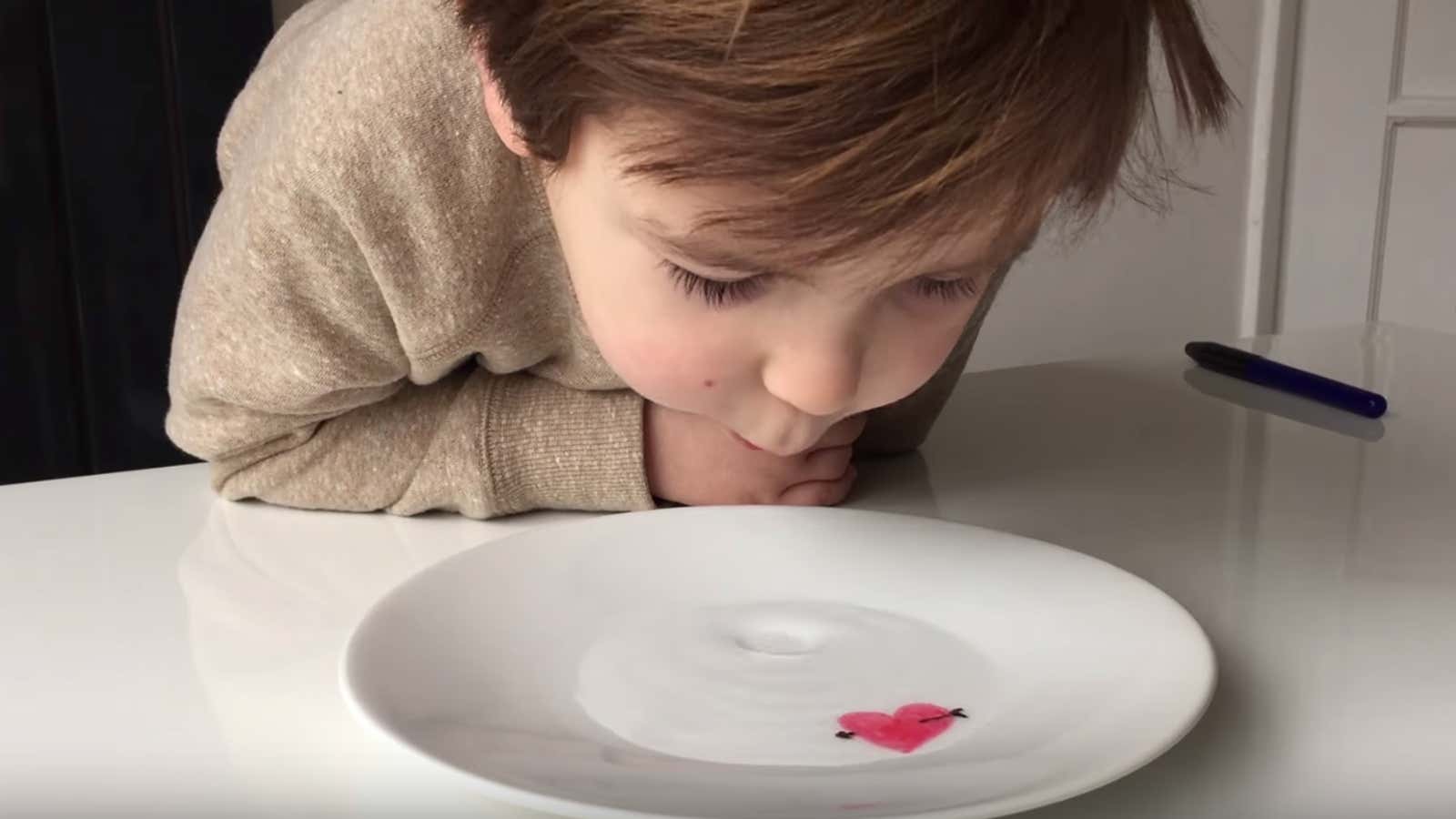Create Floating Pictures With Your Child

Want your child’s drawings to disappear from the page? Invite them to try this scientific experiment by Sergei Urban, aka TheDadLab . He shares this with us from his book Dad’s Lab: 50 Awesome Science Projects for Parents and Children .
The activity is simple but impressive. (You’re pretty much guaranteed “Ooooooo.”) It’s science, it’s art, and it’s a great addition to your summer boredom jar.
What you need:
- Water
- Dry erase markers (newer works best)
- Ceramic plate
What You Will Learn: Some images can float no matter what you draw them on.
How long will you need: 20 minutes
How to do it:
- Check all dry erase markers to make sure they are suitable for this exercise: draw one point on the plate using each marker and add some water. The handles only fit if the dots are floating. Then have your child draw on a plate. It’s best to color the drawing so it sticks together, although line drawings can work too.
- Pour some lukewarm water slowly onto a plate.
- The drawing should detach from the surface and float on top.
- Try blowing it with a straw.
- Create an entire scene and watch the pieces fly around each other!
Why not try …
After you’re done playing with floating drawings, try placing the paper in water to transfer the drawings to it.
What if…
Do you try this with regular markers?
What’s happening?
These activities are aimed at promoting creativity more than teaching science. But it works because the ink in dry erase markers is a polymer – a type of plastic that forms a hard film when dry and does not dissolve in water. It doesn’t stick very tightly to the smooth ceramic plate (glass is good too), so the water will just lift it up.
Mastermind Facts
Dry erase markers work exactly the opposite of regular markers. The ink in permanent markers sticks tightly to almost any surface, so you won’t be able to tear it off. But the whole point of dry erase markers is that you can erase what you draw or write because they stick very little to the surface.
But there is a second important reason why the drawing comes off with water, namely that the film formed by dried ink is less dense than water. This is why when water slips under the design and lifts it off the surface, the design is carried away to the surface of the water like a bouncing cork.
This experiment is adapted from TheDadLab by agreement with TarcherPerigee, a member of Penguin Group (USA) LLC, A Penguin Random House Company. Copyright © 2019, Sergey Urban.